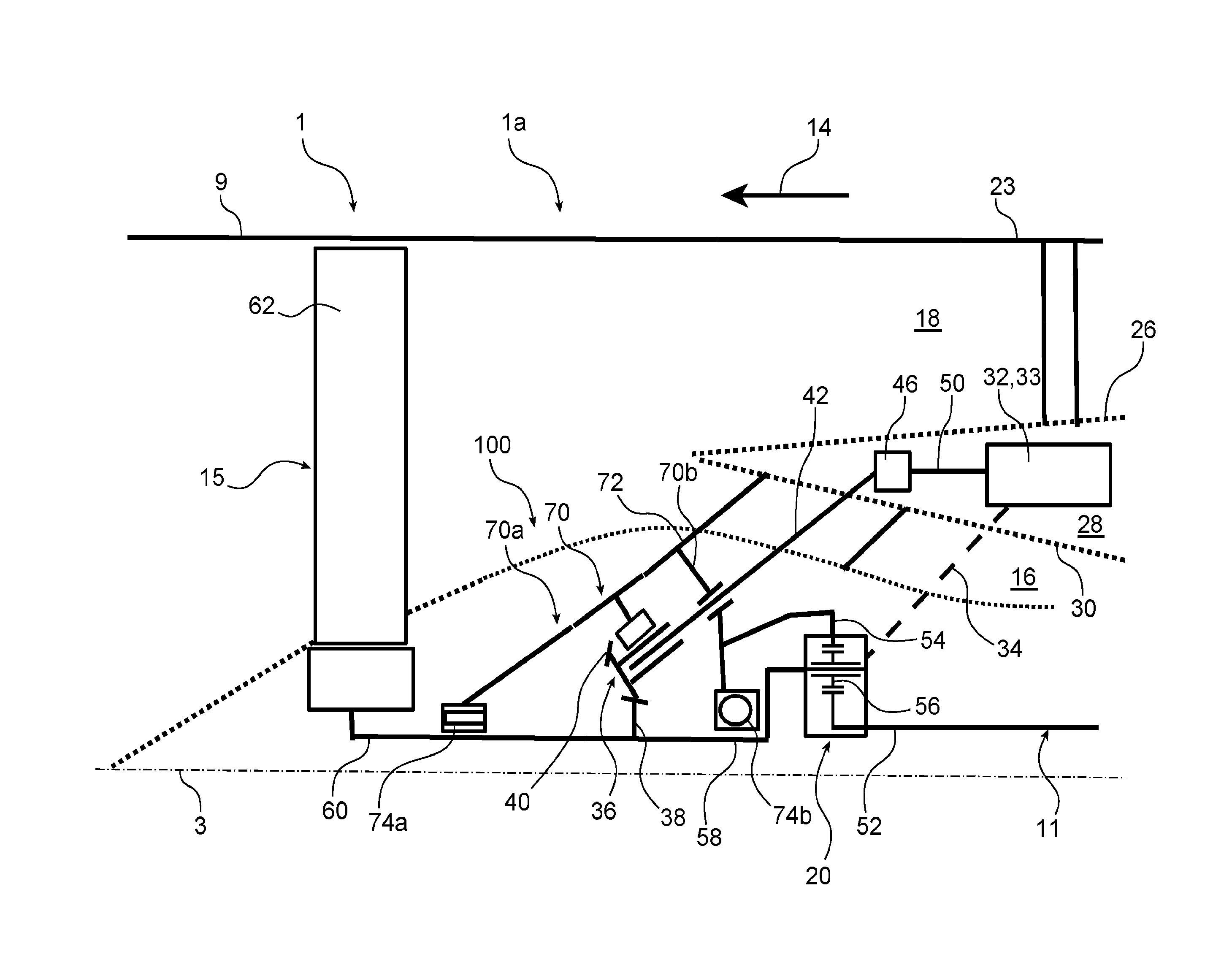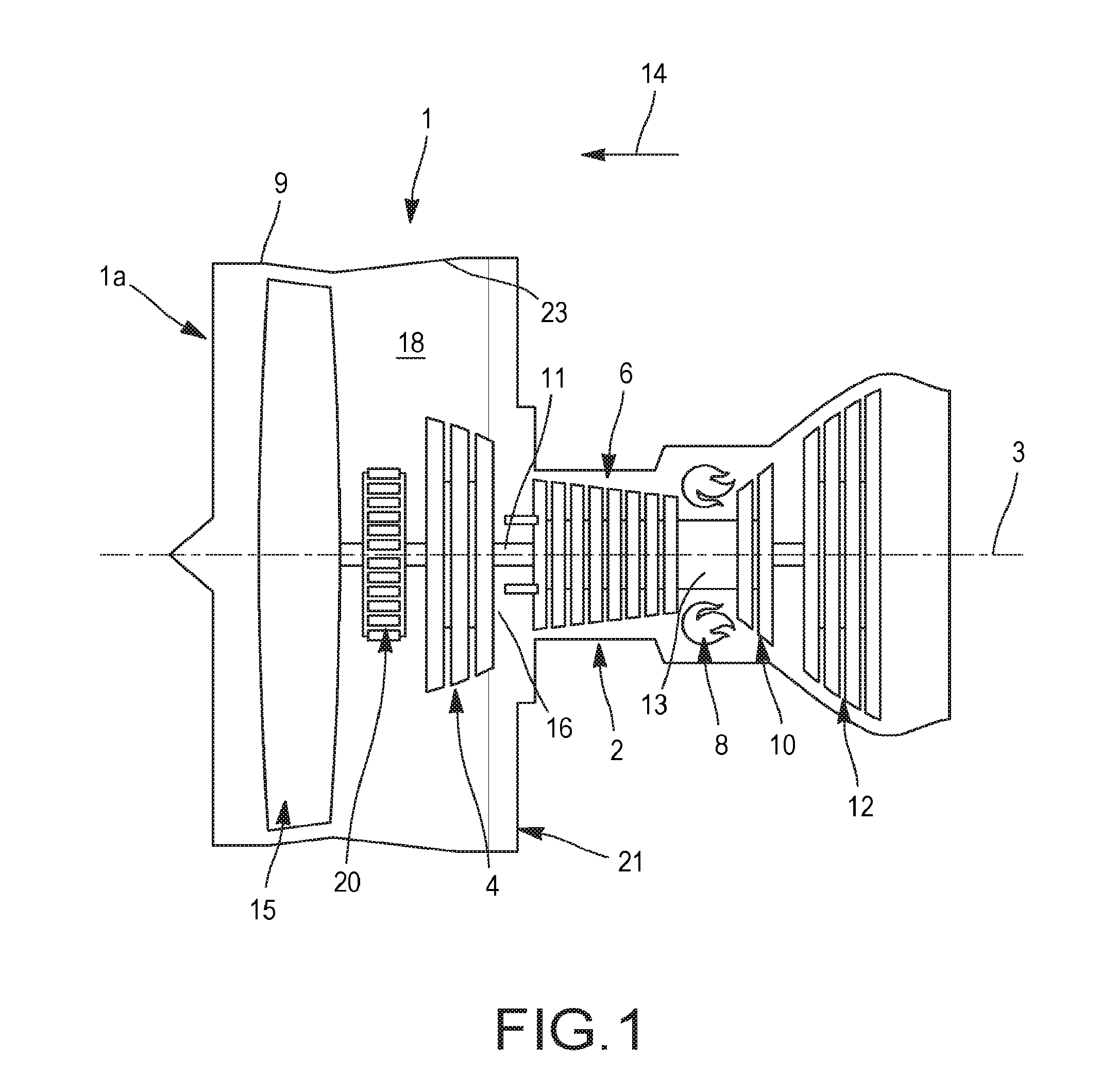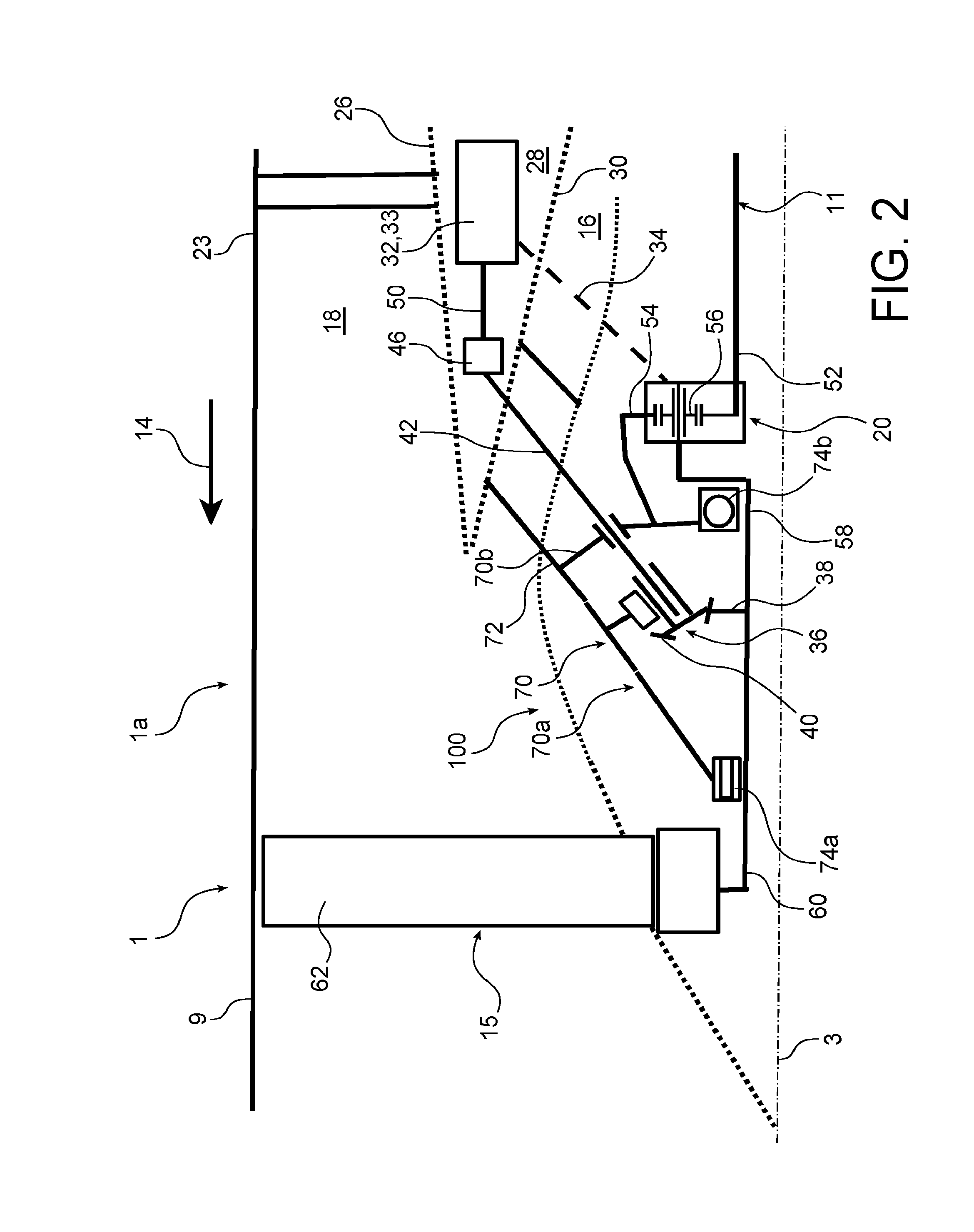Aircraft turbine engine with improved mechanical power takeoff
a technology of mechanical power takeoff and turbine engine, which is applied in the direction of machines/engines, mechanical equipment, sustainable transportation, etc., can solve the problems of inability to meet the requirements remain in the field of mechanical power takeo
- Summary
- Abstract
- Description
- Claims
- Application Information
AI Technical Summary
Benefits of technology
Problems solved by technology
Method used
Image
Examples
Embodiment Construction
[0032]With reference first of all to FIGS. 1 and 2, a double-body bypass turbojet engine 1 is shown, having a high dilution ratio. The turbojet engine 1, which has a front part referenced 1a in FIG. 2, comprises in a conventional fashion a gas generator 2 on either side of which are arranged a low-pressure compressor 4 and a low-pressure turbine 12, this gas generator 2 comprising a high-pressure compressor 6, a combustion chamber 8 and a high-pressure turbine 10. Hereinafter the terms “front” and “rear” are considered in a direction 14 opposite to the main direction of flow of the gases in the turbojet engine, this direction 14 being parallel to the longitudinal axis 3 of said direction.
[0033]The low-pressure compressor 4 and the low-pressure turbine 12 form a low-pressure body and are connected to each other by a low-pressure shaft 11 centred on the axis 3. Likewise, the high-pressure compressor 6 and the high-pressure turbine 10 form a high-pressure body and are connected to each...
PUM
 Login to View More
Login to View More Abstract
Description
Claims
Application Information
 Login to View More
Login to View More - R&D
- Intellectual Property
- Life Sciences
- Materials
- Tech Scout
- Unparalleled Data Quality
- Higher Quality Content
- 60% Fewer Hallucinations
Browse by: Latest US Patents, China's latest patents, Technical Efficacy Thesaurus, Application Domain, Technology Topic, Popular Technical Reports.
© 2025 PatSnap. All rights reserved.Legal|Privacy policy|Modern Slavery Act Transparency Statement|Sitemap|About US| Contact US: help@patsnap.com



